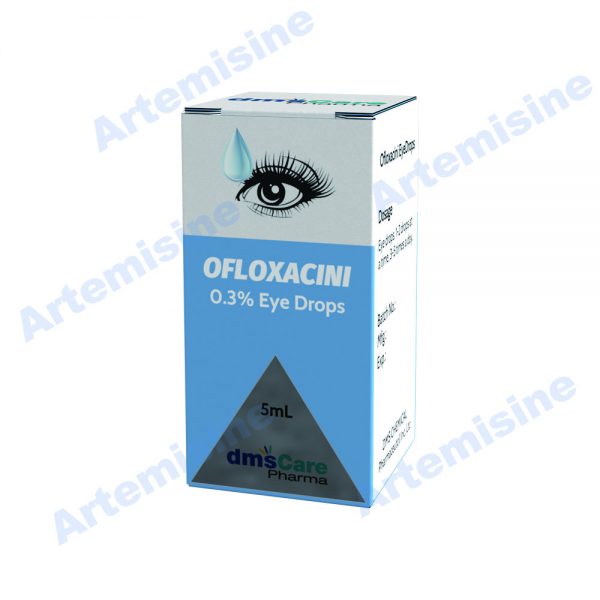Product Description
Each mL contains:
Ofloxacin 3mg(0.3%).
Package:
5mL bottle in box .
Ofloxacini eye drops, 0.3% is a sterile ophthalmic solution. It is a fluorinated carboxyquinolone anti-infective for topical ophthalmic use.
INDICATIONS & USAGE
Ofloxacin ophthalmic solution is indicated for the treatment of infections caused by susceptible strains of the following bacteria in the conditions listed below:
Efficacy for this organism was studied in fewer than 10 infections
CONJUNCTIVITIS:
Gram-positive bacteria:
Gram-negative bacteria:
Staphylococcus aureus
Enterobacter cloacae
Staphylococcus epidermidis
Haemophilus influenzae
Streptococcus pneumoniae
Proteus mirabilis
Pseudomonas aeruginosa
CORNEAL ULCERS:
Gram-positive bacteria:
Gram-negative bacteria:
Staphylococcus aureus
Pseudomonas aeruginosa
Staphylococcus epidermidis
Serratia marcescens*
Streptococcus pneumoniae
Anaerobic species:
Propionibacterium acnes
DOSAGE&ADMINISTRATION
The recommended dosage regimen for the treatment of bacterial conjunctivitis is:
Days 1 and 2
Instill one to two drops every two to four hours in the affected eye(s).
Days 3 through 7
Instill one to two drops four times daily.
The recommended dosage regimen for the treatment of bacterial corneal ulcer is:
Days 1 and 2
Instill one to two drops into the affected eye every 30 minutes, while awake. Awaken at approximately four and six hours after retiring and instill one to two drops.
Days 3 through 7 to 9
Instill one to two drops hourly, while awake.
Days 7 to 9 through
treatment completion
Instill one to two drops, four times daily.
WARNINGS
Ofloxacin ophthalmic solution should not be injected subconjunctivally, nor should it be introduced directly into the anterior chamber of the eye.
There are rare reports of anaphylactic reaction/shock and fatal hypersensitivity reactions in patients receiving systemic quinolones, some following the first dose, including ofloxacin. Some reactions were accompanied by cardiovascular collapse, loss of consciousness, angioedema (including laryngeal, pharyngeal or facial edema), airway obstruction, dyspnea, urticaria, and itching. A rare occurrence of Stevens-Johnson syndrome, which progressed to toxic epidermal necrolysis, has been reported in a patient who was receiving topical ophthalmic ofloxacin. If an allergic reaction to ofloxacin occurs, discontinue the drug. Serious acute hypersensitivity reactions may require immediate emergency treatment. Oxygen and airway management, including intubation should be administered as clinically indicated.
